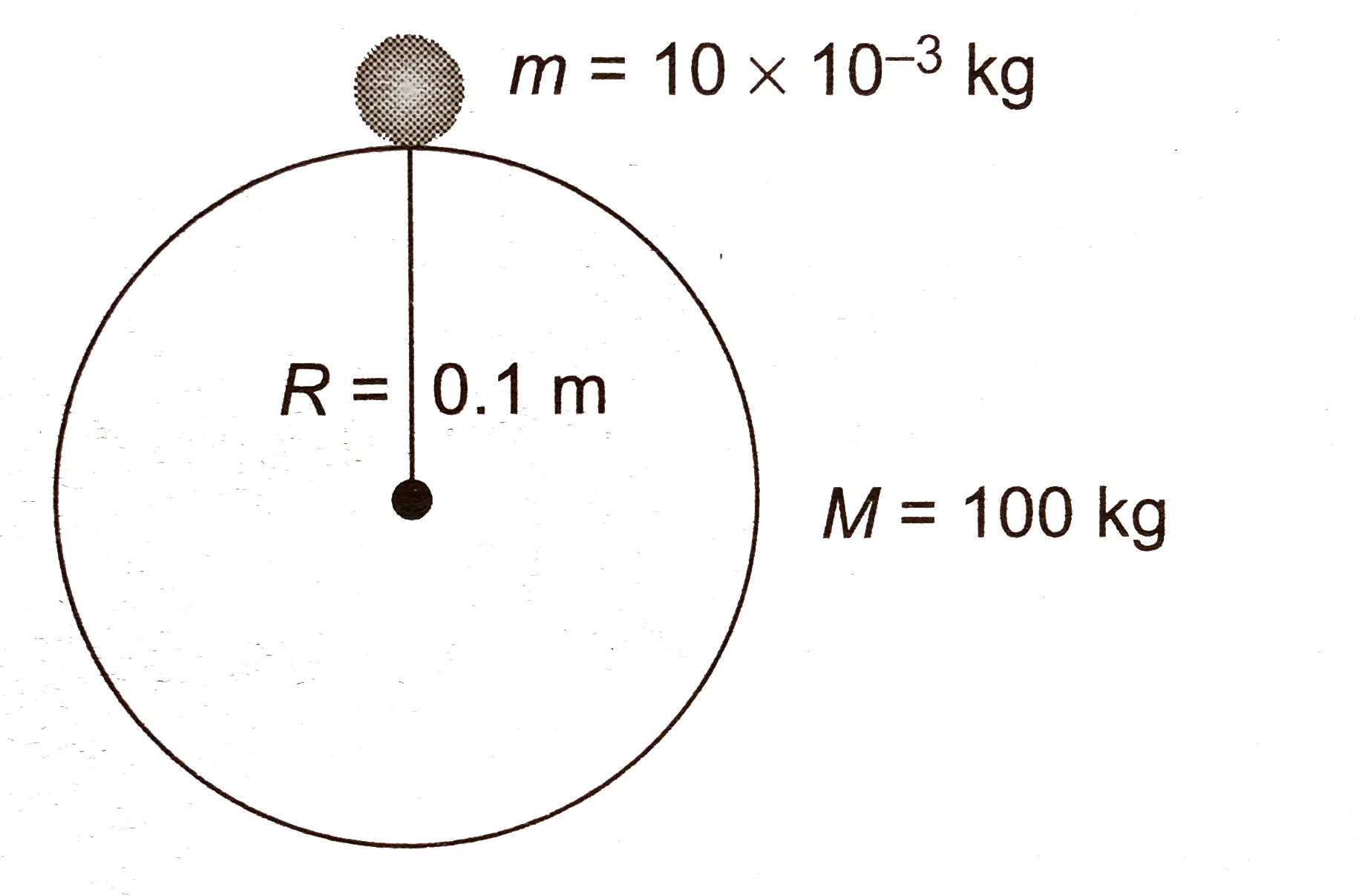A particle of mass 10g is kept on the surface of a uniform sphere of masss 100kg and radius 10cm. Find the work to be done against the gravitational force between them to take the particel far away from the sphere (you may take G=6.67×10−11Nm2kg2)
13.34×10−10J
3.33×10−10J
6.67×10−9J
6.67×10−10J
The correct Answer is:D
Ui=−GMmr
Ui=−6.67×10−11×100×10−20.1
Ui=−6.67×10−110.1
=−6.67×10−10J
We know that
W=ΔU
=Uf−Ui (∵Uf=0)
∴W=Ui=6.67×10−10J.

Topper's Solved these Questions
- BOOK - A2ZCHAPTER - MOCK TESTEXERCISE - Motion With Constant Acceleration15videos
MOCK TEST
- BOOK - A2ZCHAPTER - MOCK TESTEXERCISE - Motion With Constant Acceleration15videos
MOCK TEST
- BOOK - A2ZCHAPTER - KINETIC THEORY OF GASES AND THERMODYNAMICSEXERCISE - Chapter Test29videos
KINETIC THEORY OF GASES AND THERMODYNAMICS
- BOOK - A2ZCHAPTER - MOTION IN TWO DIMENSIONEXERCISE - Chapter Test29videos
MOTION IN TWO DIMENSION
Similar Questions
kAS particle of mass 100 g is kept on the surface of a uniform sphere of mass 10 kg and radius 10 cm. Find the work to bbe dne against the gravitational force between them to take the particle away from the sphere.
View SolutionA particle of mass 1kg is kept on the surface of a uniform sphere of mass 20kg and radius 1.0m. Find the work to be done against the gravitational force between them to take the particle away from the sphere.
View Solution
Knowledge Check
- Question 1 - Select One
A particle of mass 10g is kept on the surface of a uniform sphere of mass 100 kg and radius 10 cm. Find the work to be done against the gravitational force between them, to take the particle far away from the sphere (you may take G=6.67×10−11Nm2/kg2)
A13.34×10−10JB3.33×10−10JC6.67×10−9JD6.67×10−10J - Question 2 - Select One
A particle is kept on the surface of a uniform sphere of mass 100 kg and radius 10 cm. Find the work to be done per unit mass against the gravitational force between them, to take the particle far away from the sphere (you may take h=6.67×10−11Nm2kg−2)
A13.34×10−10JB3.33×10−10JC6.67×10−9JD6.67×10−8J - Question 3 - Select One
The centres of two identical spheres are 50cm apart. If the gravitational force between the spheres be 4.0N, find the mass of each sphere. Given, G=6.67×10−11Nm2kg−2.
A2×106kgB1.22×108kgC4×103kgD1.22×105kg
A particle of mass 1 kg is kept on the surface of a uniform thin spherical shell of mass 20 kg and radius 1 m. Find the work to be done against the gravitational force between them to take the particle away from the thin spherical shell.
View SolutionTwo heavy spheres each of mass 100 kg and radius 0.1 m are placed 1.0 m apart on a horizontal table. What is the gravitational field and potential at the mid point of the line joiningthe centres of the spheres ? Take G=6.67×10−11Nm2Kg−2.
View SolutionThe centre of two identical spheres are 1.0 m apart . If the gravitational force between the spheres be 1.0 N , then what is the mass of each sphere ?
(G=6.67×10−11m3kg−1s−2) .View SolutionThe masses of two spheres are 10 kg and 20 kg respectively. If the distance between their centres is 100m, find the magnitude of the gravitational force between them.
View SolutionCalculate the gravitational force of attraction between two spherical bodies, each of mass 1kg placed at 10m apart (G=6.67×10−11Nm2/kg2).
View Solution

